Tulum, A Coastal Pueblo Magico
Did you know that Tulum is the only Mayan civilization site built on the edge of the sea?
A trip to Tulum is a must if you’re visiting the Riviera Maya region of Mexico. Overlooking the Caribbean Sea, Tulum is part of the Mayan culture and had its heyday between the 13th and 15th centuries. Today with its preserved frescos and spectacular views, it’s a major tourist attraction and a designated Pueblo Magico. These popular ruins can best be enjoyed with the storytelling elements of a guide. Ernie, our guide, brought these old buildings to life by entertaining us with historical facts, Mayan culture and modern day revelations.
Disclosure: Some links may be affiliate links where we receive a super-small commission at no additional cost to you if you click through and make a purchase. We call this our Chocolate & Churro Fund.
How to Get There and Where to Stay
Tulum is located 90 minutes south of the Cancun International Airport (CUN). You have a variety of resorts, boutique hotels and airbnbs in Cancun, Playa del Carmen, Cozumel, Tulum and Akumal. Check out Booking.com for all your vacation options.
Entering Tulum Through the Wall
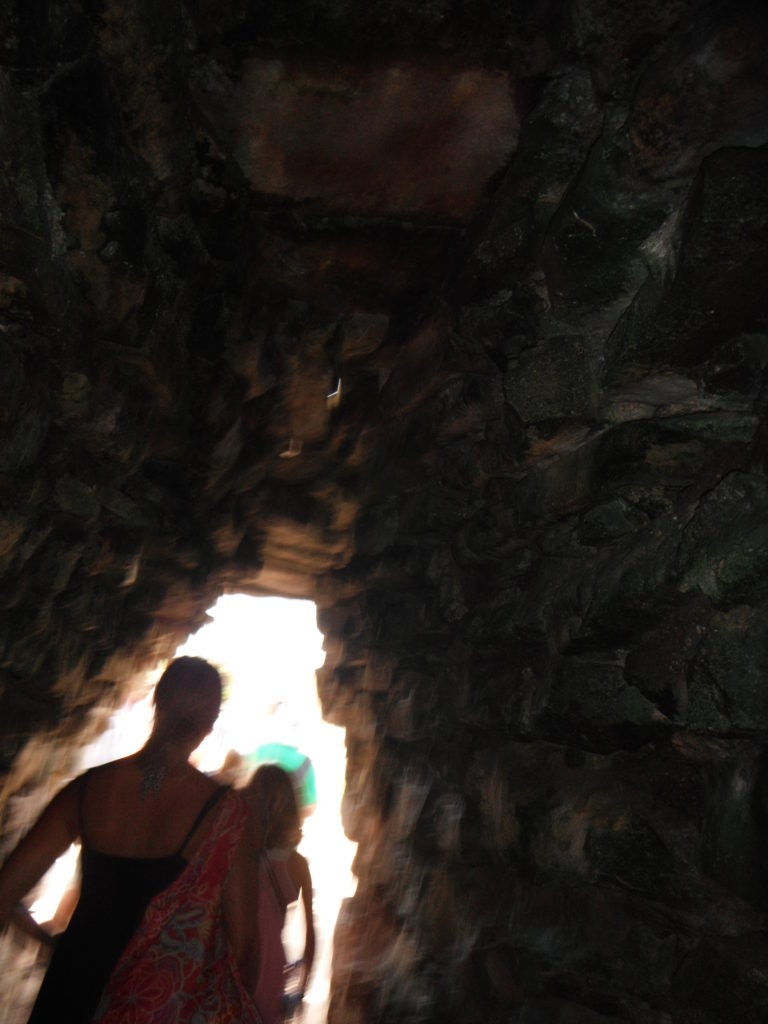
Known as Zama in ancient times, Tulum was a ceremonial center and also an important trade port. Zama in Mayan means “the place where the sun comes up”, or dawn. In 1842, archeologists named it Tulu ‘Um meaning “wall”. The walls bordering the North, West, and South were 5 meters (15 feet) high and 7 meters (21 feet) deep. The Caribbean Sea was a natural border on the East. Tulum was well equipped to provide for its people and visitors. It had farmland outside its walls, an underground freshwater river where they built the Casa del Cenote, and the bounty of the sea to provide food.
A Bit of History
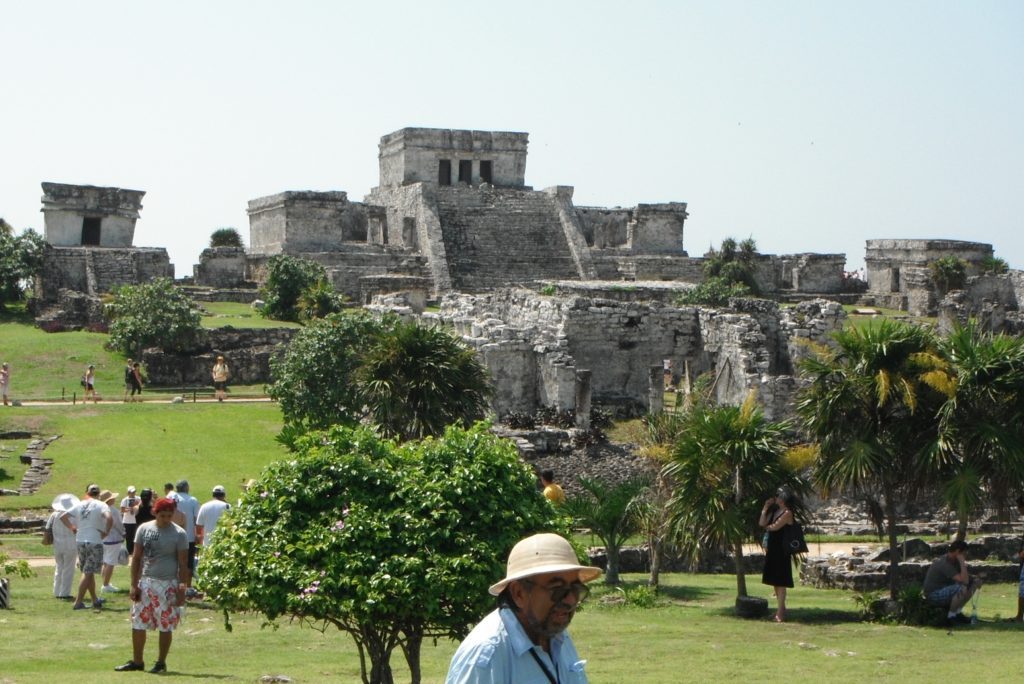 On Left: Templo del Dios Descendente; on Right: El Castillo; in Center: Ernie
On Left: Templo del Dios Descendente; on Right: El Castillo; in Center: Ernie
Built in 1200 A.D. and still inhabited in 1518 as mentioned in the journal of Spaniard Juan Diez who was part of Juan de Grijalva’s expedition, Tulum was completely abondoned by the late 16th century. In 1842, it was “found” again by John Lloyd Stephens and Frederick Catherwood who published the first detailed description of the ruins in 1843. Excavations began in 1921 and continue to this day.
Mexico consists of 5000 archeological zones, but only 150 or so have been uncovered. Unfortunately, it costs mucho dinero to excavate a site and reclaim it from the jungle.
Temples of Tulum
Both Mayan and Toltec cultures are depicted in Tulum. Kukulcan (or Quetzalcoatl), the feather serpent, and Ixchel, the Goddess of Moon and Childbirth, are two very important Toltec gods absorbed into the Mayan culture. The Mayans and Toltecs both sacrificed humans to the gods, but approached this way of worship differently. The Toltecs captured people to sacrifice; the Mayans considered it an
honor to sacrifice their own life to the Gods. They believed in reincarnation and prepared for death spiritually and ceremoniously. El Castillo is where most of the ceremonies and sacrifices took place.
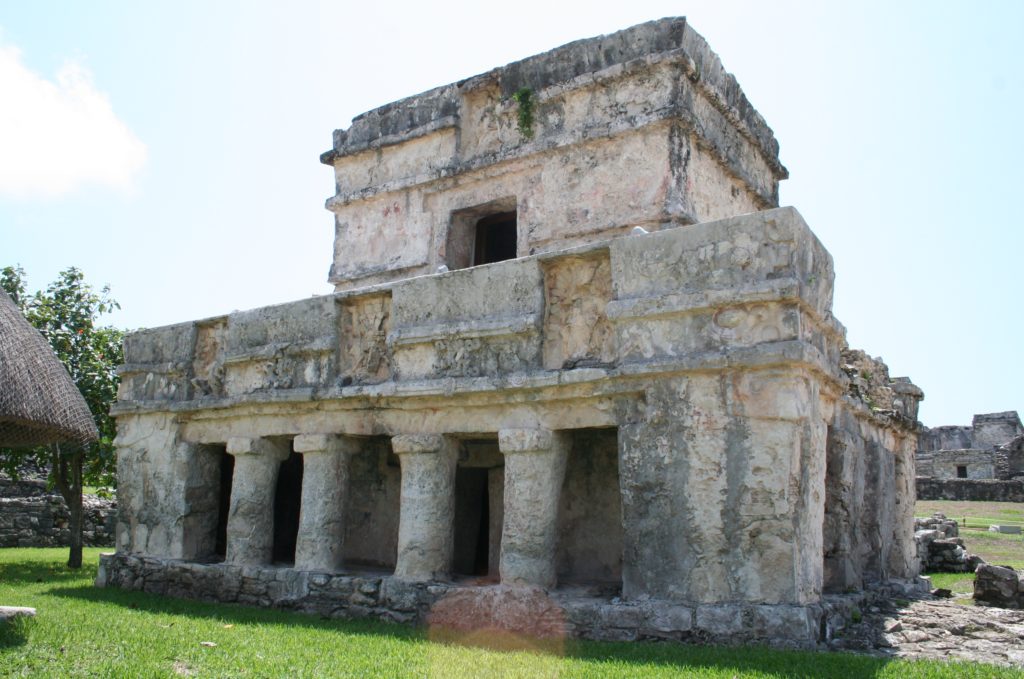
Templo del los Frescos
The Templo del los Frescos (Temple of the Frescoes) is the most intact and interesting of all the ruins because of the murals, carvings, and faded paint colors.
The Descending God and Ixchel, the fertility God, are depicted on the temple numerous times. The temples were constructed with stone roofs held up by a stone corbel arch. Palaces also had stone roofs but they were held up by wood beams. After a few hundred years they disintegrated and the roof collapsed. When people died, they were buried in their house. Doorways were built small on purpose to show humility by bowing to the gods.
Ernie liked to add his own little quips. “These guys were short, but they weren’t that short”.
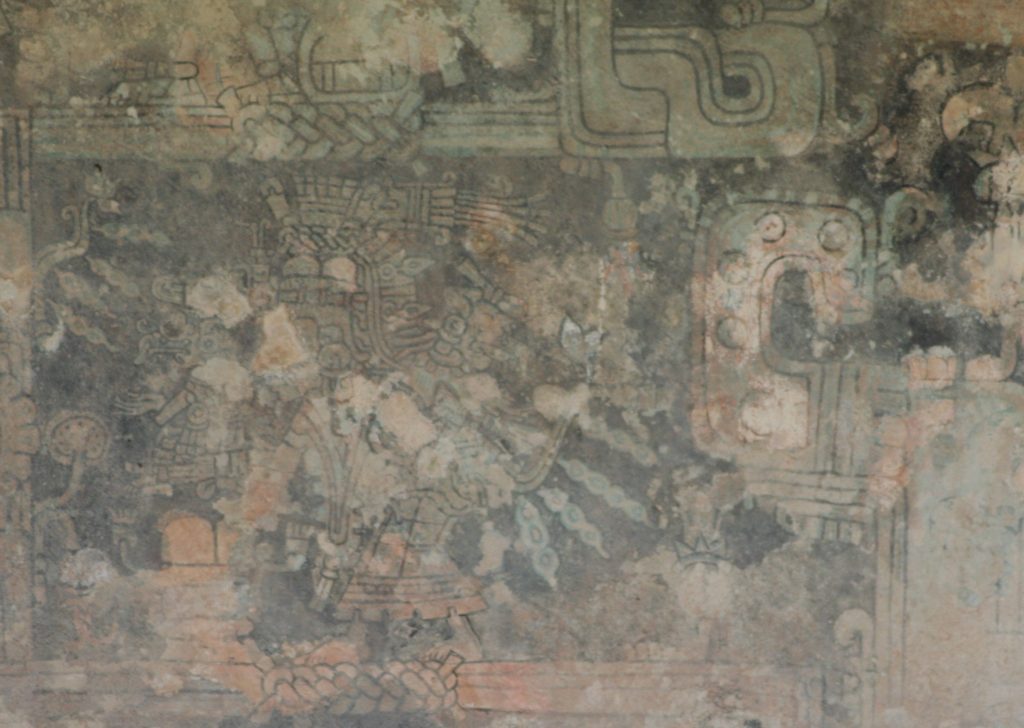
Language of the Mayans
The Rosetta Stone was the key to translating the Egyptian hieroglyphs, but we are still looking for the key to the Mayan hieroglyphs. About 75% has been translated, but the last 25% is crucial in helping us decipher their heritage. Today’s Mayan language consists of 23 dialects, and according to Ernie, “that’s why we crazy”.
Mayan children learn the Mayan language at home, and are taught Spanish in school. By 10 years of age, they are bilingual. Words of wisdom from Ernie,” December 12, 2012 was the end of an era, and a new era began. Nostradamus started his theories, but never finished them. And don’t listen to Mel Gibson. He’s crazy”.
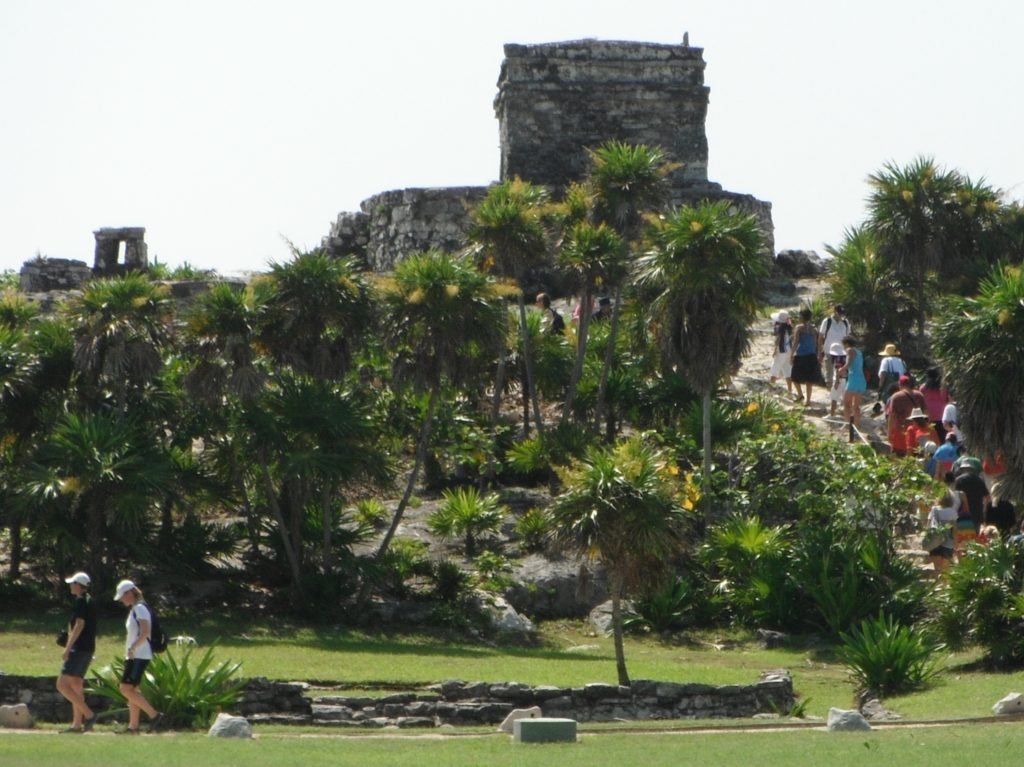 Templo del Dios Viento
Templo del Dios Viento
In the Mayan culture, everything had a reason “to be”. Buildings were built according to the rotation of the sun and moon. Holes and spaces were deliberately built into structures for the Mayans to tell time.
The Templo del Dios Viento (Temple of the God of Wind) had a rotating stick on it with a hole in the circular end. When hurricanes were approaching, the wind whipped through the hole causing a whistling sound which would warn the people to seek cover.
According to Ernie, “After 1200 years, still working, better than the Weather Channel. Those guys always wrong.”
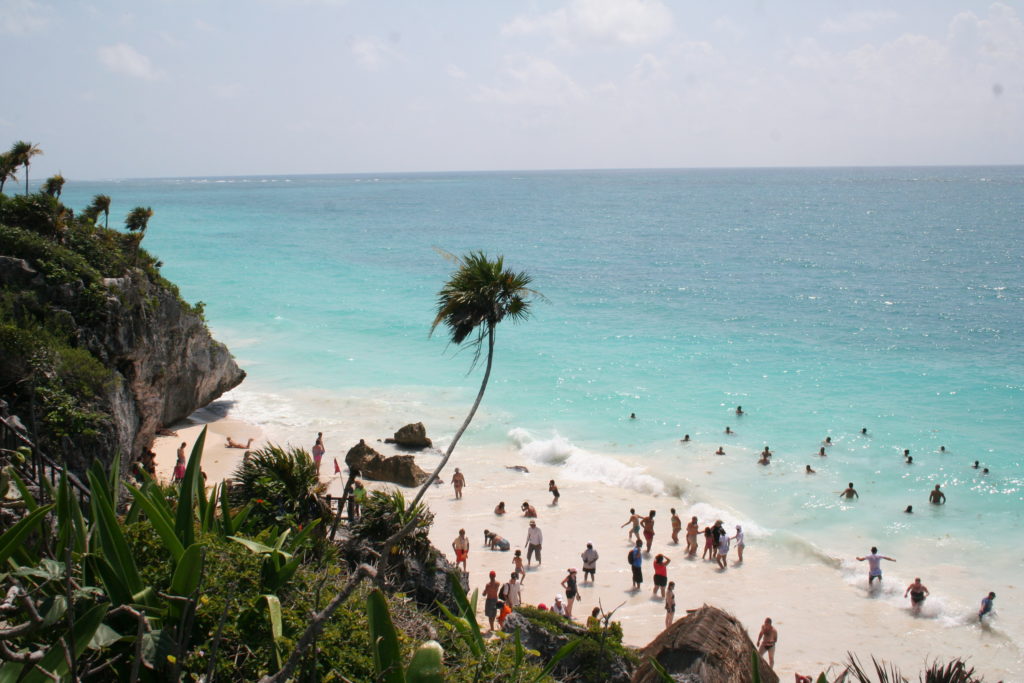 Tulum Beach
Tulum Beach
Best Time To Go
Tulum is a year-round attraction. The hottest months are May through August, but the sea breezes make it tolerable. Hurricane season is June 1- Nov 1, and you may have good days or bad days. November through March you will have pleasant weather and less rainy days. Tulum is about 45 minutes south of Playa del Carmen where you can arrange many tours.
Whatever time of the year you go, Tulum is worth the visit. Take a little extra time to visit its beach as well. With white sand and sparkling blue water, its one of the most picturesque beaches in the Riviera Maya. You might even get lucky and see some turtle tracks.


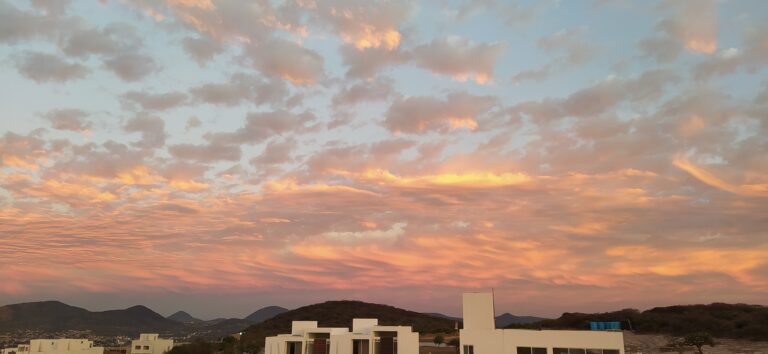

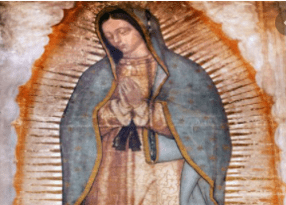
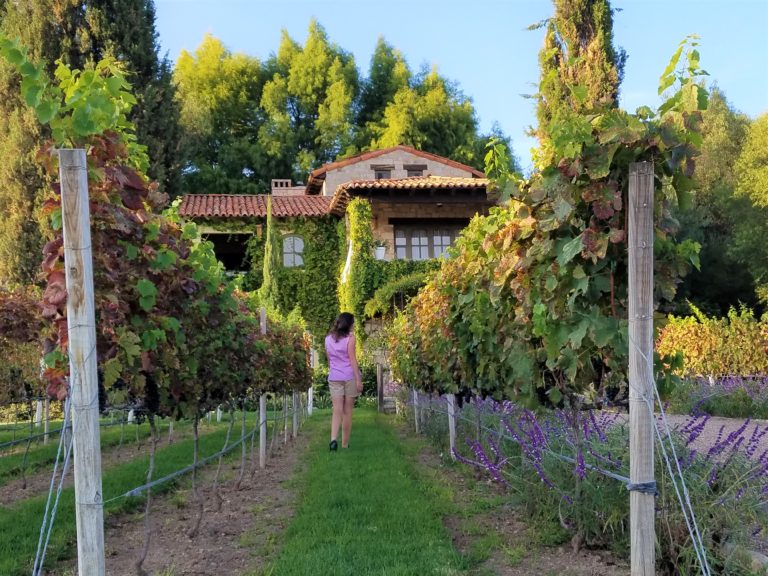

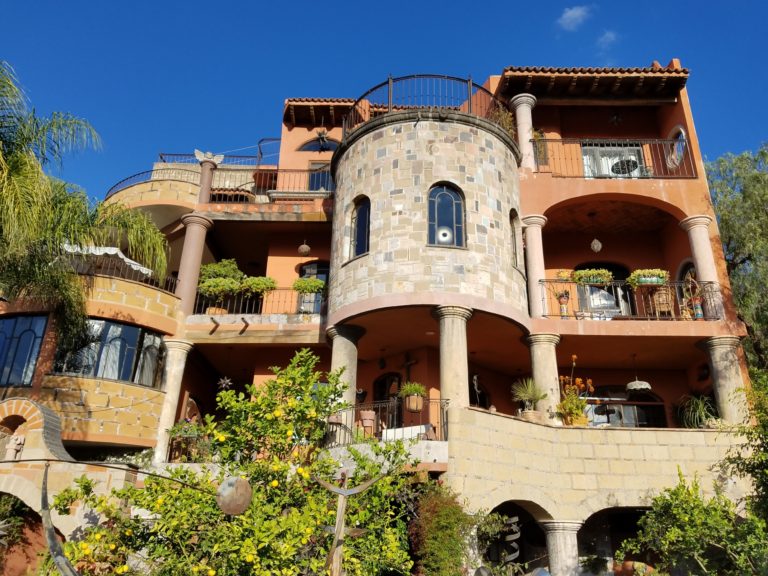
Great article. I love Tulum ruins. I think the best time to go is as early as possible. If you get there when it opens there are less people and the sun isnt so hot.
Exactly! The earlier the better! The Riviera Maya has so many hidden gems like the cenotes.now that I have a GoPro, I cant wait to go back!